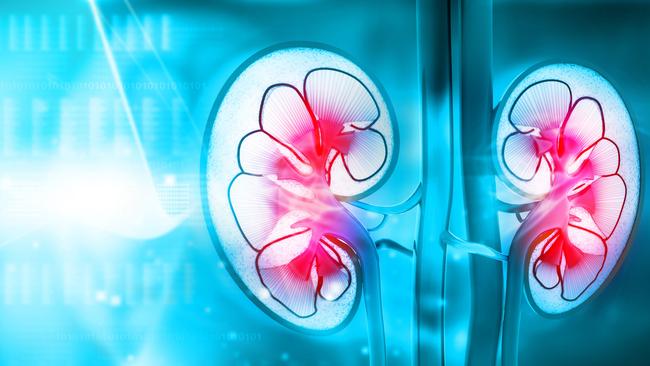Lab-grown kidneys a step closer after Melbourne-Dutch researchers’ breakthrough
Lab-grown kidneys inch one step closer with new breakthrough by Melbourne scientists.
VIC News
Don't miss out on the headlines from VIC News. Followed categories will be added to My News.
MELBOURNE scientists’ ambitious bid to grow kidneys in the lab to treat disease has moved one step closer.
The team of Australian and Dutch researchers successfully transplanted one of their mini-organs made from stem cells into a living mouse and it developed into mature kidney tissue.
The ultimate goal is to grow functioning kidney tissue that could be used as an alternative for renal replacement.
MORE: Murdoch Children’s Research Institute study finds genetic test should be offered to all
Royal Melbourne Hospital frees record number of patients from dialysis
Seniors hit in cuts to pension
Man hit, ‘blinded’ in savage attack
Murdoch Children’s Research Institute first created mini-kidneys in 2015 for use in modelling disease, testing drugs and cell therapy.
In new research published today in Stem Cell Reports, the team from MCRI, University of Melbourne and Leiden University Medical Centre in the Netherlands showed their kidney organoid could be transplanted into a living mouse.
Within four weeks it matures into adult kidney tissue that looks and functions more like a human organ.
“I’m very excited by this finding,” MCRI Professor Melissa Little said.
“It’s one important step in a long journey.”

Until now they have only been able to create immature kidney tissue in the lab.
“We found that if you actually transplant it back into a mouse, the blood vessels grow in and start supplying blood to the tissue and that helps it mature and they start making capillaries and filtering,” she said.
“They begin to resemble something that looks more like a human kidney.”
They were able to see the blood flow through the mini-organ by using gene-editing to make the filtering cells blue and then putting a green dye into the mouse’s blood.
“We were also able to see that the blood vessels that we transplant in with the kidney organoid join up with the mouse vascular system.”

The next step is to increase the organoid’s size, it’s only a few millimetres in length and has 30-50 filters, compared with one million in a human kidney.
“The kidney is very complex and performs a variety of functions, not only does it filter the blood but it makes urine so we need to show that our organoid can not only make it, but find a way for it to leave the body and we might have to build an exit path our of different cells,” Prof Little said.
Chronic Kidney Disease is increasing with one in 10 Australians expected to be diagnosed by 2020.
A kidney transplant from a living or deceased donor is one of the treatments for the disease, but at any one time there are 1500 people waiting for a donor organ.


